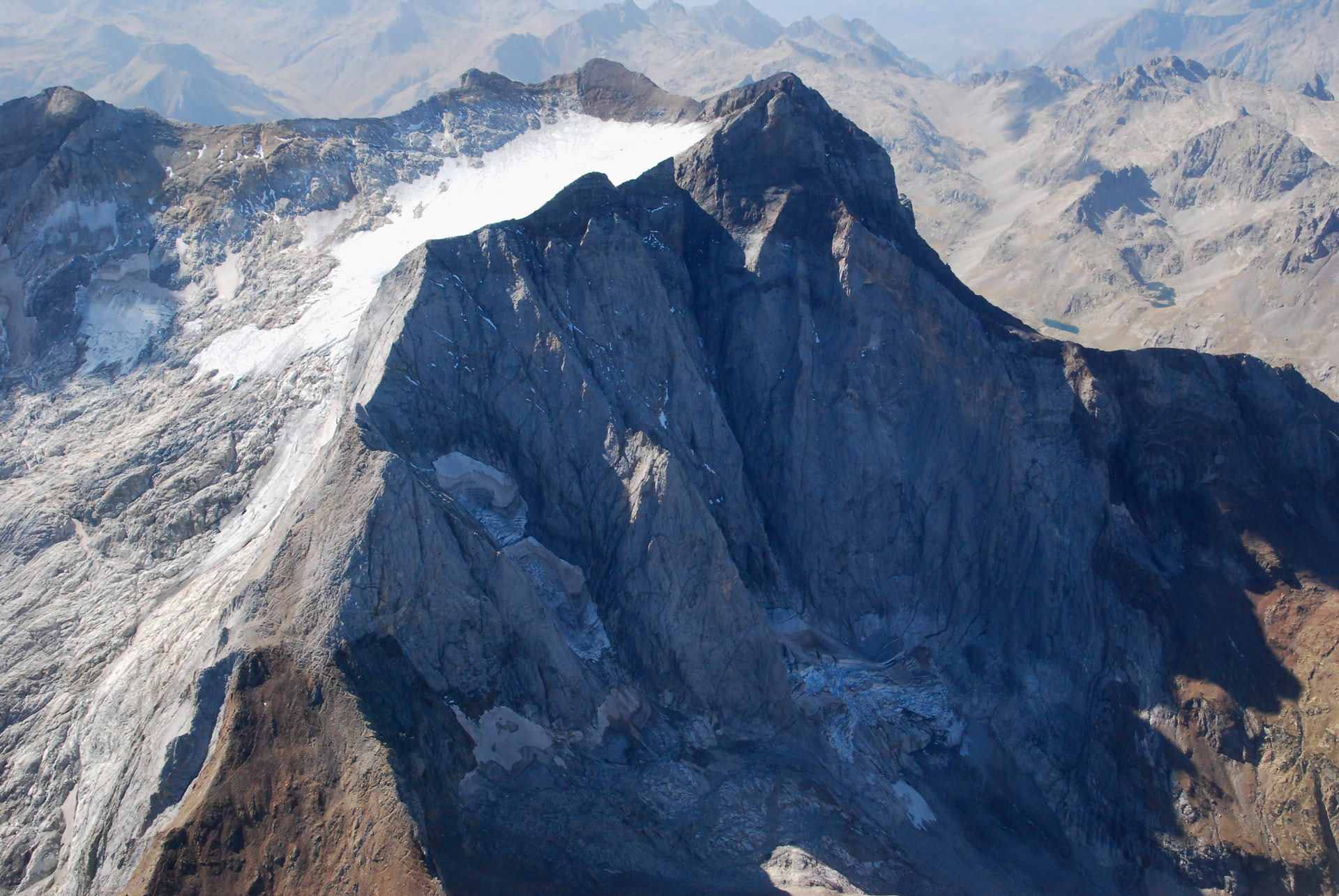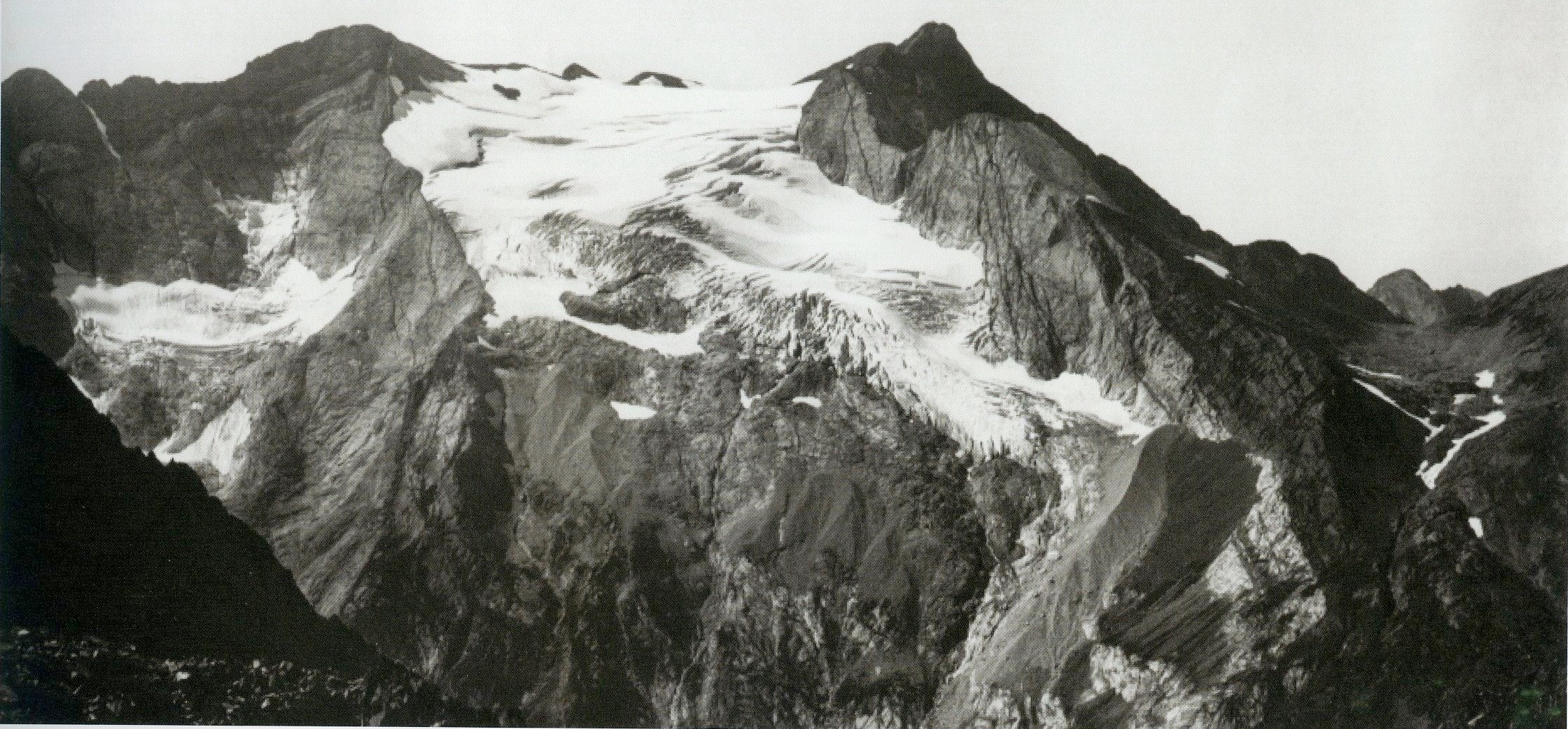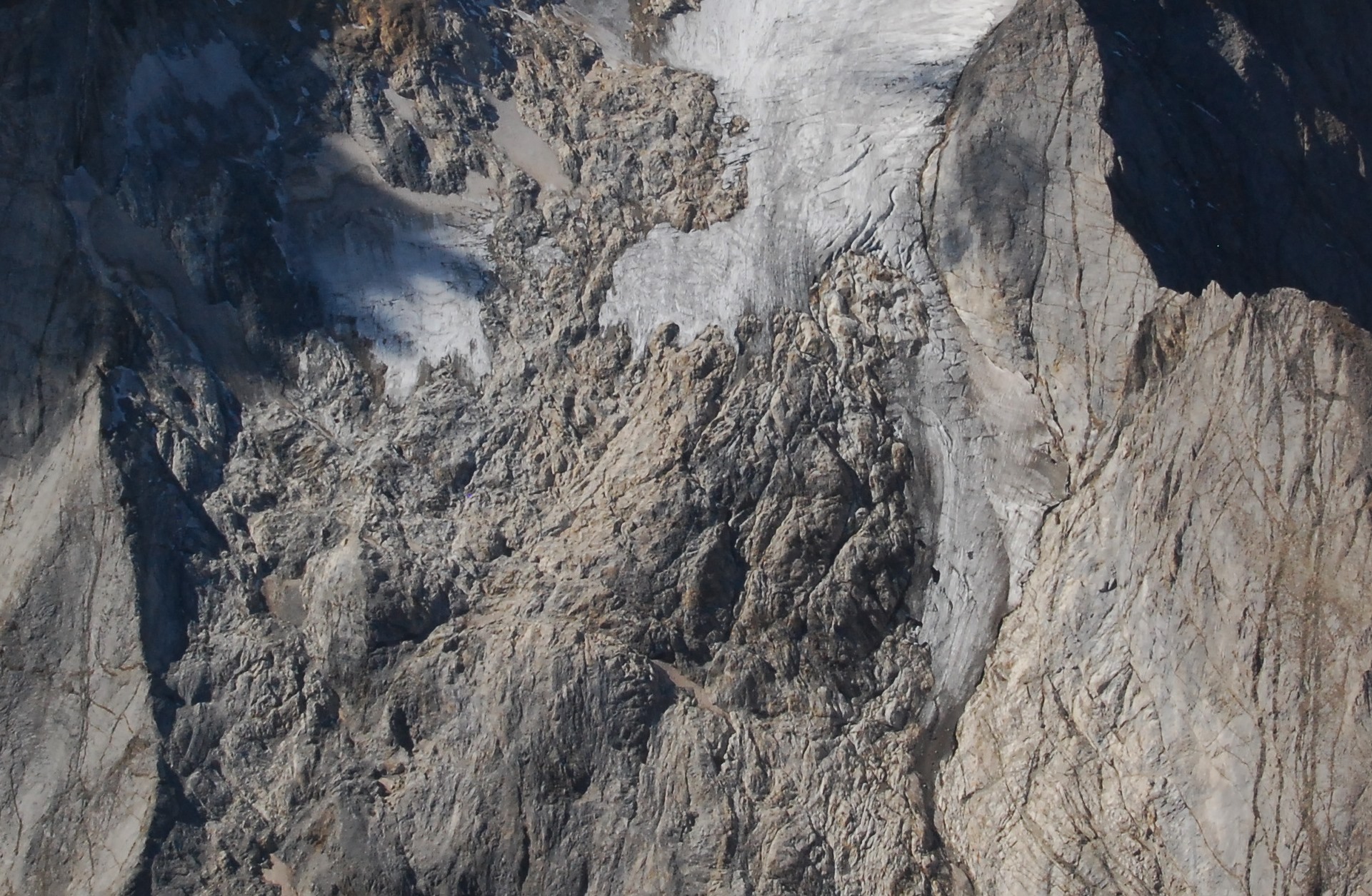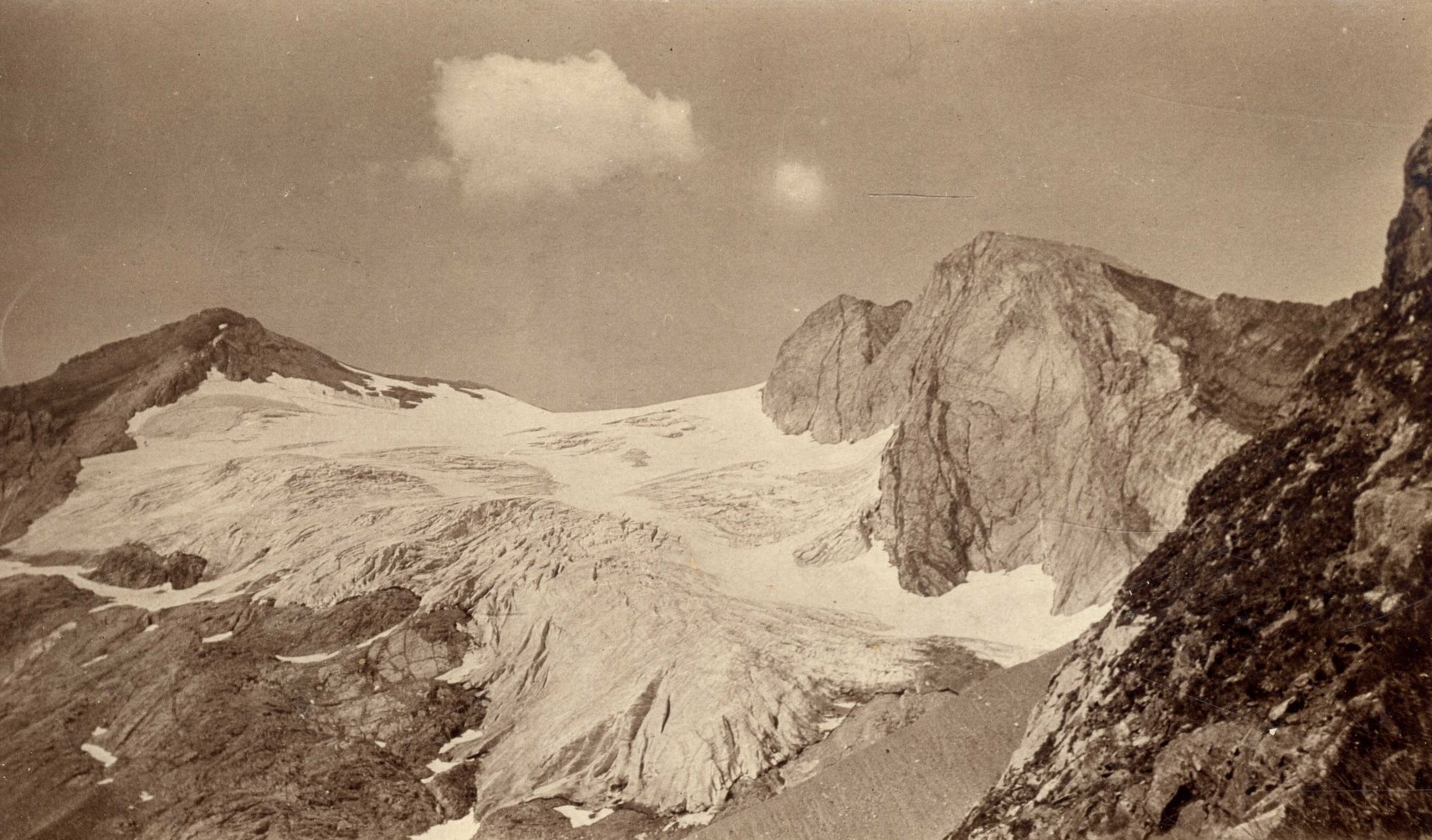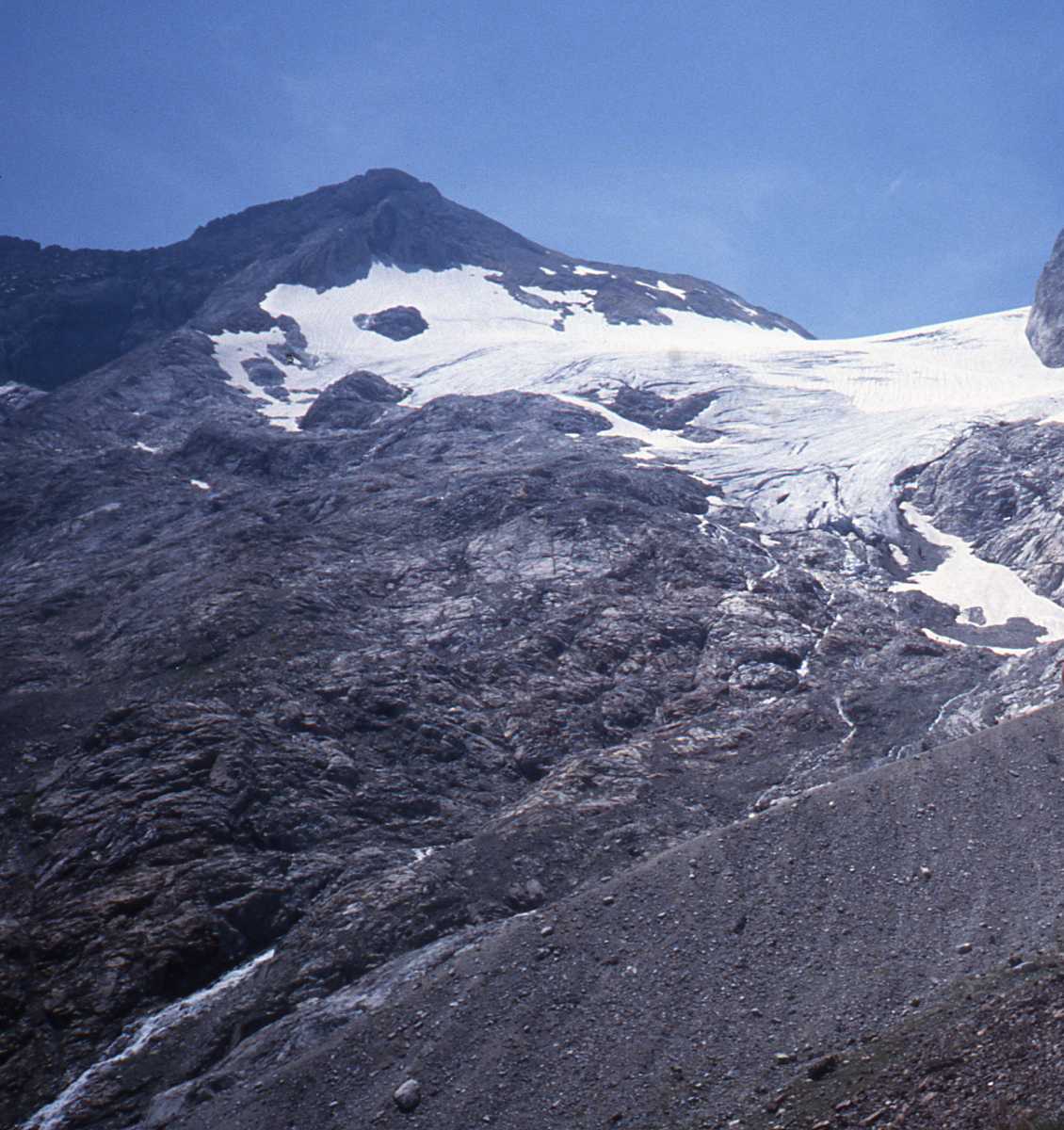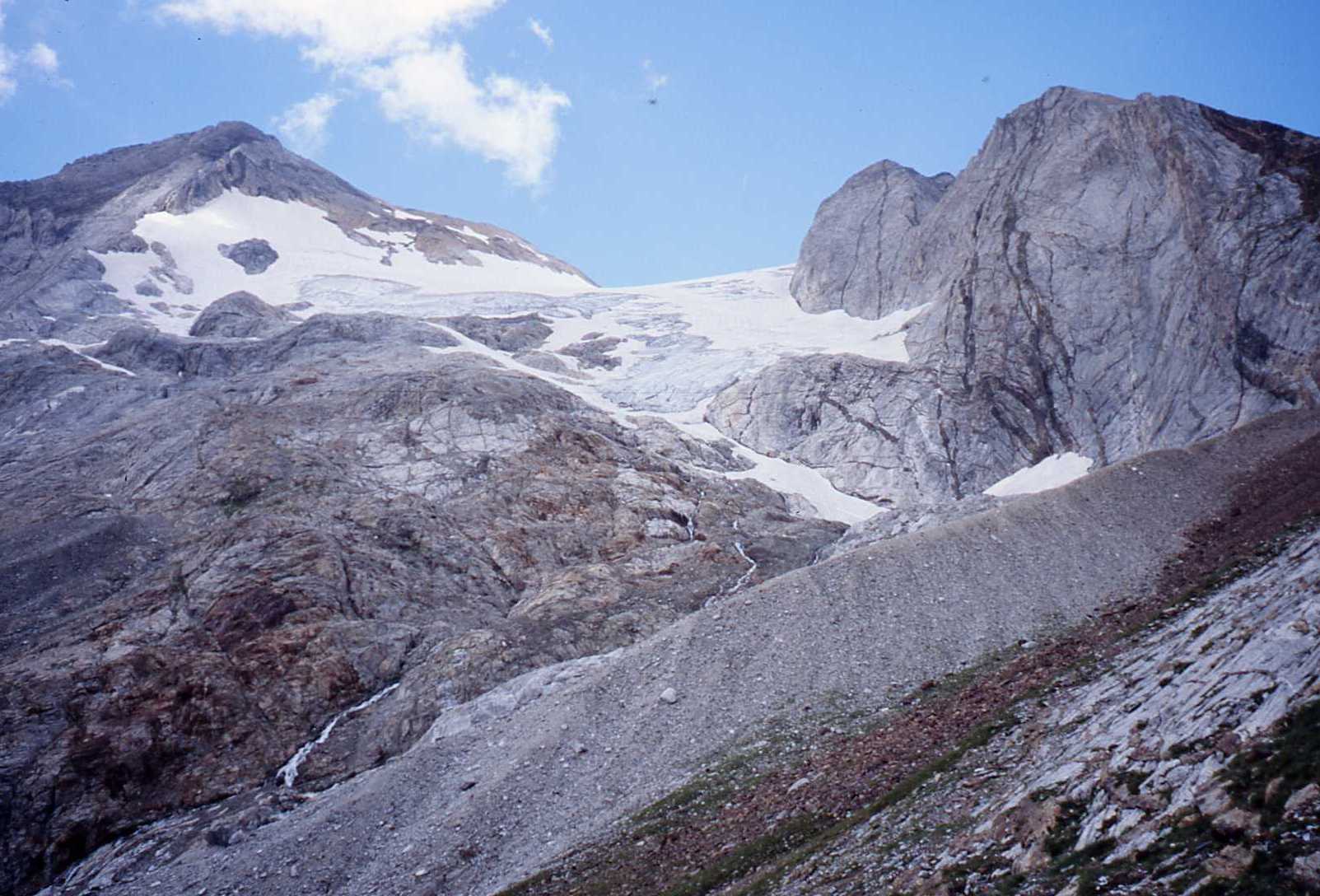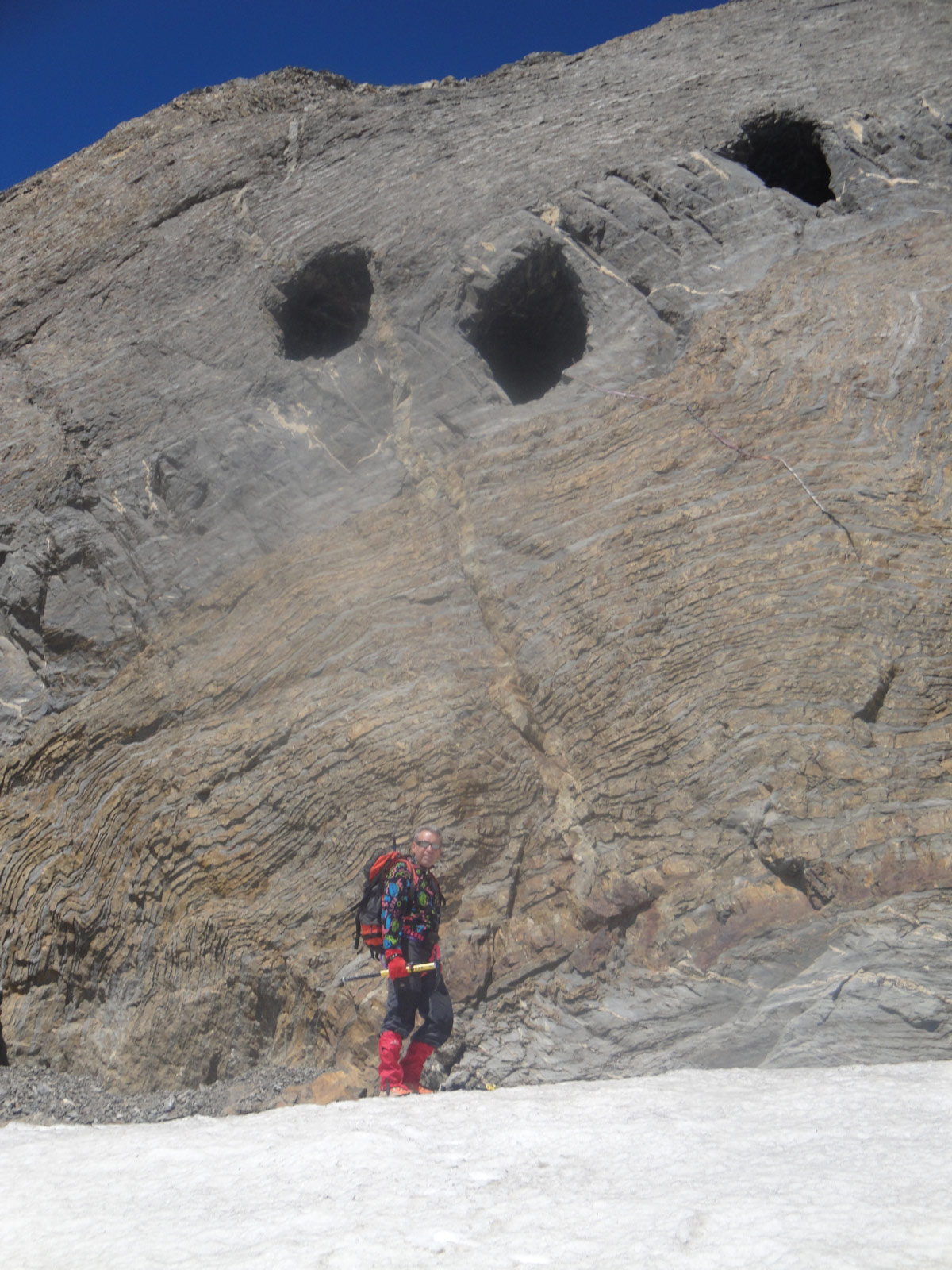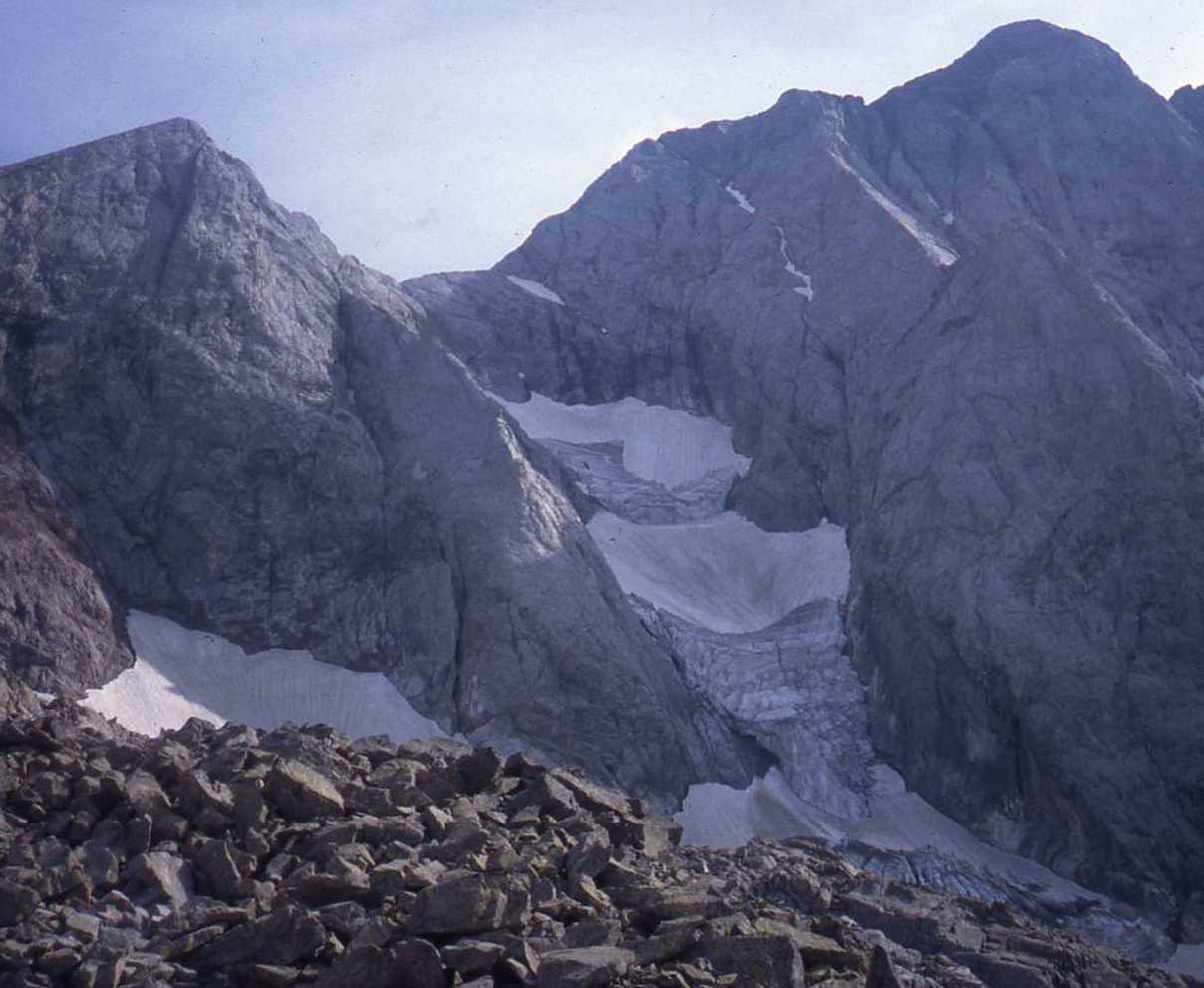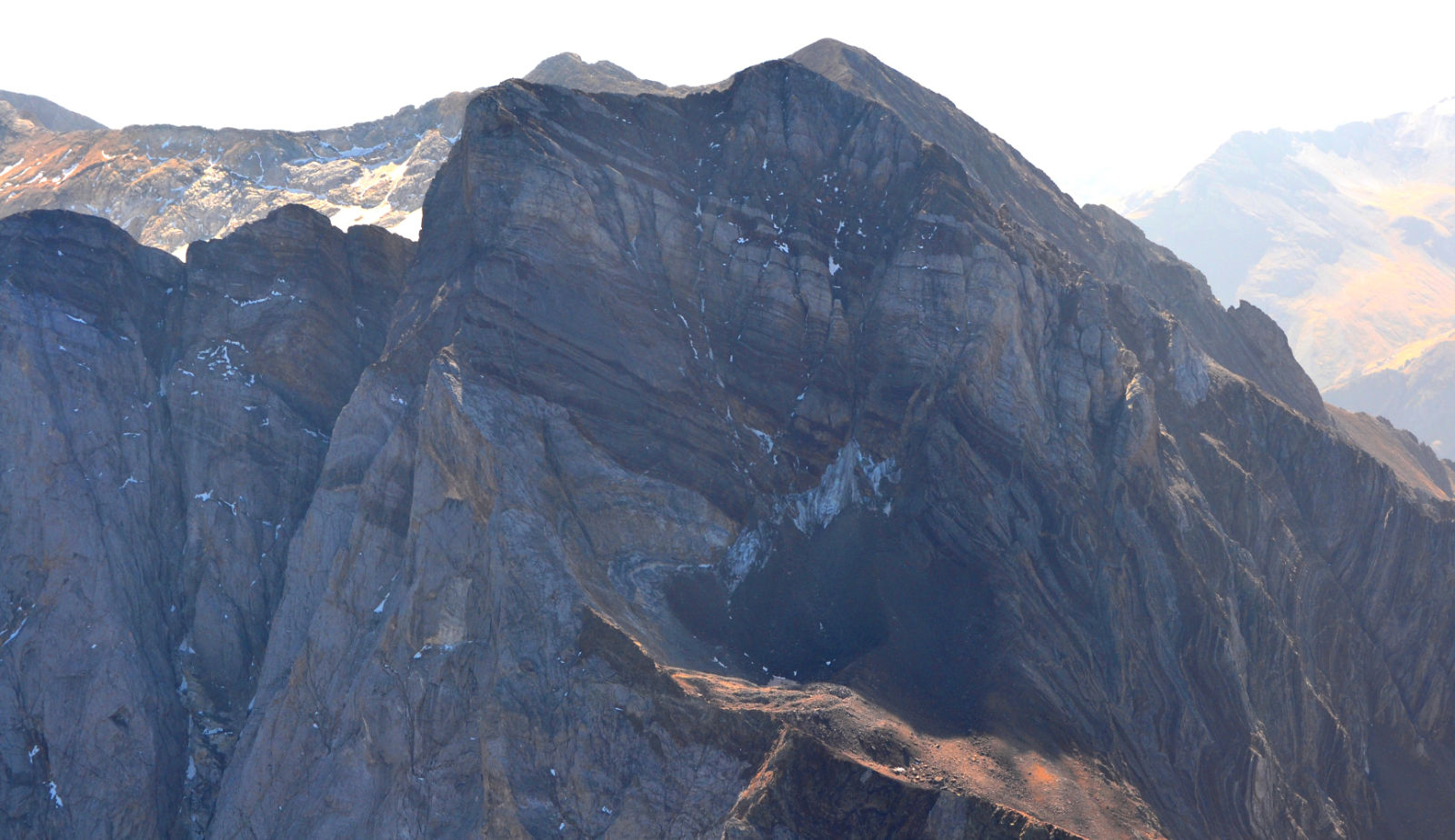The Ossoue Glacier is the largest glacier on the Occitan side of the Pyrenees. Facing east, its upper section was until recently home to the ‘Plateau des Neiges’, which throughout its history has been the glacier’s feeding area. In recent times, at the end of the summer, snow is practically non-existent and has ceased to fulfil this essential function for the generation of new ice. During the Little Ice Age, its 112 hectares made it the fifth largest glacier in the Pyrenees, representing 57% of the ice in the massif. Its tongue reached a length of 2,430 m, far exceeding the other large glaciers in the mountain range. The ice tongue continued to maintain its impressive dimensions of 1.9 km and 1.6 km at the beginning and end of the 20th century, respectively, and 1.4 km in 2012. In 2007, a strip of rock that had emerged from the glacier in a south-north direction from the buttresses of Pico de Montferrat at the entrance to the Plató des Neiges consolidated. This strip cornered the tongue’s path towards the upper crevasses at the base of the southern slope of the Col des Glaciers. Finally, in 2016 and 2017, it split both lobes into two independent glaciers. The smaller fragment of the glacier, which we call the ‘Southern Fragment’, still showed some signs of activity in 2017, but is now classified as a helero. On the left margin of the northern slope of the glacier, a narrow tongue of ice clung to the base of the Col des Glaciers-Petit Vignemale, which eventually split off from the main body in 2022, taking on the morphology of a helero.The average retreat in length of the glacier during this century has been quantified at 13 m/year, and the loss of thickness at 2 m/year. In recent years, clear signs of collapse have been detected, with the rate of surface and thickness loss replicating itself. Currently, the main body of the glacier and its fragments cover 14.5 ha, representing approximately half of the surface area it has occupied over the last 25 years. However, it remains the third largest glacier in the mountain range, containing 75% of the ice in the massif and 11% of the total ice in the Pyrenees.
Este aparato glaciar pertenece al siguiente macizo:
77) Ossoue
Comparativa de imágenes

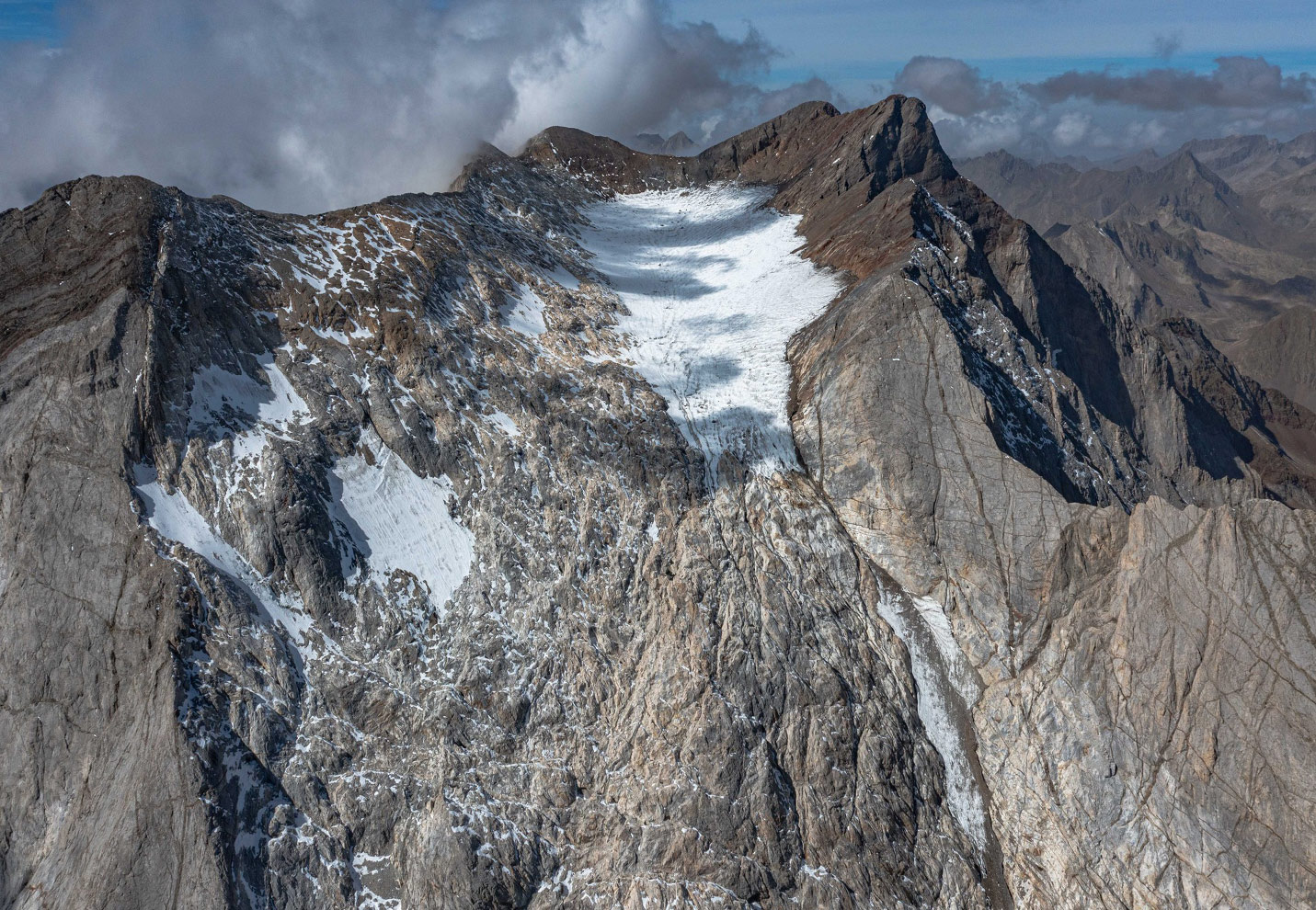
50-year comparison – 1972 to 2022.
The Ossoue Glacier in 1972, with its enviable ice thickness. On the left, a partial view of the Montferrat Glacier. (Author unknown).
In 2022, intense melting in the five years since the previous photo was taken. The glacier has been confined to the Plató des Neiges, which no longer lives up to its name. (Eñaut Izaguirre).


Comparison of 117 years – 1895 to 2012.
The Ossoue Glacier in 1895, when it was over 1.9 km long. On the right of the photograph, the left marginal moraine of the PEH stands out. (Prince Roland Bonaparte – Société de Géographie de Paris).
In 2012. The slow retreat ends with the onset of the glacier’s collapse, quickly disappearing from the slope. (Jordi Camins).


Comparison of 19 years – 1993 to 2012.
Detail of the front of the glacier in 1993. (Jordi Camins).
Two decades later, in 2012, the front of the glacier was clearly retreating towards the Plató des Neiges. (Jordi Camins).


Comparison of 137 years – 1895 to 2022.
Villa Russell in 1895. The caves excavated at the upper edge of the ice, near the Cervillona Pass, which a few years later were submerged inside the ice due to a brief but significant growth of the glacier. (Société de Géographie de Paris).
The inaccessible Villa Russell in 2022. The significant loss of thickness of the glacier over the last decade is evident. (Eñaut Izaguirre).


10-year comparison – 2012-2022.
The Ossoue Glacier in 2012 still has a compact front. (Jordi Camins).
In 2022, ten years after the previous image, only the split Southern Fragment survives in the form of a helleura, protected on the northern slope of Montferrat Peak. (Gabriel Baena).


Comparison of 98 years – 1921-2019.
In 1921, the upper limit of the Couloir de Gaube, where the ice from the Ossoue Glacier flowed towards the northern slope, helping to feed the Oulettes de Gaube Glacier. The glacier and the snow covering it occupy the southern slope of Piton Carré and Punta Chausenque. (Ignasi Casals i Tarrats – AFCEC).
In 2019, the loss of thickness and the coverage by erosion material are evident. (Enric Casellas).

